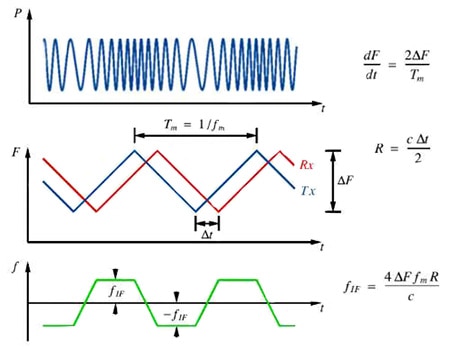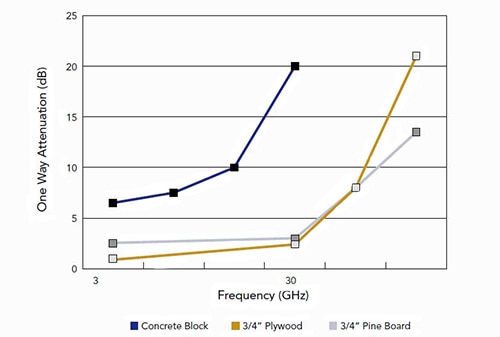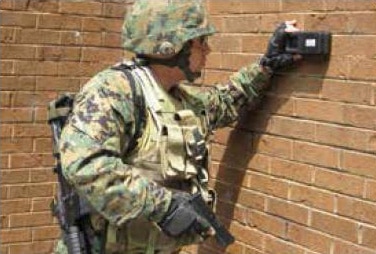Using RF to See Through Walls
投稿人:电子产品
2015-08-13
While it is reasonably well known that military and law enforcement agencies have utilized RF technology (as well as thermal, acoustic, and IR) to allow them to see through walls, it is less recognized that there are civilian uses for this type of technology as well.
Many carpenters and even “do-it-yourself” homeowners have discovered how a little magnetic stud-finder can help identify where nails are driven into a solid beam. However, studs are not the only thing of concern in a wall. Electric wires that are accidentally pierced by a metallic drill bit can start fires. Accidentally puncturing a gas line can lead to explosive consequences. Video wires, phone wires, alarm system wires, networks, and more can all be just out of sight and equally vulnerable.
Modern low-cost RF technology is helping make this concern a thing of the past. High-frequency semiconductors and integrated circuits coupled with advanced processors and display systems are giving us X-ray vision when it comes to creating images from behind wallboard.
Other useful functions can be performed with this technology including:
- Presence-of-life detectors to find people buried in rubble
- Finding underground and buried utility and gas lines
- Tactical entry or assault
- A baby monitor that can detect through sheets, blankets, and duvets whether or not an infant is breathing
- Surveillance devices
- Bridge and deck inspection
- Land-mine detection (245 W can penetrate 2 to 4 meters depth at heights of less than 1 meter above the soil or road)
- Fluid-level sensing
- Automotive backup radar
This article looks at how RF can be used as a wall-penetrating technology and how images can be rendered from it. It examines some techniques and architectures designers can use as a starting point before refining their own designs. All parts, data sheets, tutorials, and development kits referenced here can be found on the DigiKey website.
The inner workings
Compact multi-channel radar systems are useful for short-range sensing applications operating typically between 1 and 40 meters. Both range and angle of arrival information are processed from return signals that typically range between 400 MHz and 8 GHz. High-performance processing can discriminate targets from clutter.
Through-the-wall imaging systems can operate as continuous-wave or pulsed devices. Continuous wave can use Doppler-shift techniques to detect very small movements, even breathing (Figure 1). The radars work like finely tuned motion detectors, using radio waves to zero in on movements from a distance of more than 50 feet. They can detect whether anyone is inside of a house, where they are, and whether they are moving, or if they have a weapon. Accurate, reflected signal timing is harder to accomplish, however, with steady always on transmitters.

Figure 1: In addition to imaging, Doppler continuous-wave systems can detect minute movements as frequency shifts. Breathing is periodic, but will vary in frequency and this can be detected.
Pulsed technology, or Micro Impulse Radar (MIR), developed at Lawrence Livermore National Laboratory (LLNL), sends out RF pulses that are reflected back by any objects they encounter (Figure 2). The reflected signal holds size information (how strong the reflection is), distance information (time to reflection return), material composition (micro-tremors and noise characteristics of the reflected signals), relative density (contrasts in signal strength), and trajectory (an object’s path or speed can be deduced from a collection of samples).

Figure 2: Pulsed radar can distribute the pulse energy in different bands to discern targets with different reflectivity properties. Materials that are absorptive at one frequency may reflect at another, so swept frequencies can bring them out of hiding.
The attenuation of signals will depend on the building materials and the wavelengths used as well as the emitter beam’s divergence angle. Longer wavelengths tend to penetrate barriers better than higher frequencies but it is more difficult to detect slight Doppler shifts with the lower frequency/longer wavelength signals. This gives higher frequencies an advantage when it comes to providing better location data and slight movements.
However, like all materials, there are resonances and absorption points (Figure 3). With a forehand knowledge of the types of materials you expect to encounter, it is easier to select the right bands of frequencies, chirp patterns, and power levels needed to obtain a resolute image.

Figure 3: Not only can swept frequencies see through walls, they can detect the materials used. For imaging purposes, selecting the bands that are reflective provides the most detail.
The ability to sweep frequencies can help find resonances in real-time scans and discern what frequencies, combinations, and patterns to use to maximize penetration ranges and image-reconstruction resolutions. Another technique to use is a chirp or a composite signal that contains several bands’ worth of modulation. DSP processing can then examine data from each band to more accurately reconstruct an image.
Designing through-wall sensors
Mostly standard parts are used to make a fairly comprehensive through-wall sensor device. Ideally, a wide band of directionally emitted frequencies are needed. This entails a directional antenna, or wave-guide.
Also, a flat or spatially compensated emitter detector surface is needed to more accurately scan an outer surface while logging reflection information to render the least-distorted image. The more space between the emitter and detector, the easier it is to find more distant objects. Single-point emitter detectors penetrate more directionally (in one direction).
Multi-unit synchronization and control can be helpful since these devices can be used to reconstruct 3D images. A few police or soldiers separated by even distances on the outside of a building can all use through-wall sensors to gain angular perspective. Further enhancements such as one unit transmitting while all listen can allow even higher resolutions.
From a designer’s perspective, a wideband and fast-settling oscillator or synthesizer is needed to implement the RF-frequency range. Another oscillator or synthesizer or complex waveform generator is used as the modulating chirp pattern (if used). The spectral characteristics will change as the sensor scans through different patterns looking for one that returns the clearest image.
Wideband oscillators and synthesizers like the Analog Devices HMC835LP6GE provide up to 4.1 GHz synthesis with precise regulation and PLL-feedback control. Quick tests can be performed using the 35LP6G Evaluation Board that allows you to step and test without wasting time setting up a test fixture.
Mixers, filters, and amplifiers are used and should be wideband or programmable. Wideband amplifiers like the 5 to 10 GHz HMC587LC4BTR from Analog Devices fall into the low attenuating range of many building materials. This part also can be easily tested using the company’s 108648-HMC587LC4B breakout Evaluation Board. A similar 8 to 12 GHz part, the HMC588LC4BTR is also available.
From a discrete perspective the tuning of power levels and frequencies makes parts like the NXP BFG540W/X,115 perfect for this type of design. It is small-sized and good up to 9 GHz and 500 mW of output power at 15 V. Higher power and adjustable power levels can penetrate more and allow selected depth slicing, which looks at chunks of depth within a field of view at any one time. This allows the operator to effectively tune how deep to look.
When multiple units are to be synchronized and used together, digital-repeater technology can allow hopped and aggregated data to daisy chain to a central controller. This maximizes the range and minimizes the number or active RF links the central controller has to have operating simultaneously. Also of key importance are the high-speed processors with DSP functionality able to process data streams or blocks to re-create images that the on-device display or remote operator display can use.
Police and military use
Federal contract records show the U.S. Marshals Service began buying radars in 2012 and use in other agencies is rising as well (Figure 4). In addition to spying and law enforcement, many other useful functions can be performed using this technology. For example, some have suggested using through-wall radar-sensing technology to monitor a sleeping baby to prevent Sudden Infant Death Syndrome (SIDS). While this can detect breathing through walls, it should be noted that it may not be healthy to radiate someone for a long period of time. A better use of the technology might be to find people buried in rubble after a catastrophic event such as an earthquake.

Figure 4: While military and law enforcement have been buying and using these systems for years, the technology has widespread application in industry, business, and civic infrastructure maintenance and repair.
There are many useful and justifiable uses for the see-through-the-wall technology. While still in its relative infancy as a consumer product, there is an eager market among law enforcement and military agencies, and with more engineers aware of how easily it can be done using modern technology, expect to see more designs targeting the consumer and commercial space.
For more information about the parts discussed in this article, use the links provided to access product pages on the DigiKey website.
免责声明:各个作者和/或论坛参与者在本网站发表的观点、看法和意见不代表 DigiKey 的观点、看法和意见,也不代表 DigiKey 官方政策。








 中国
中国